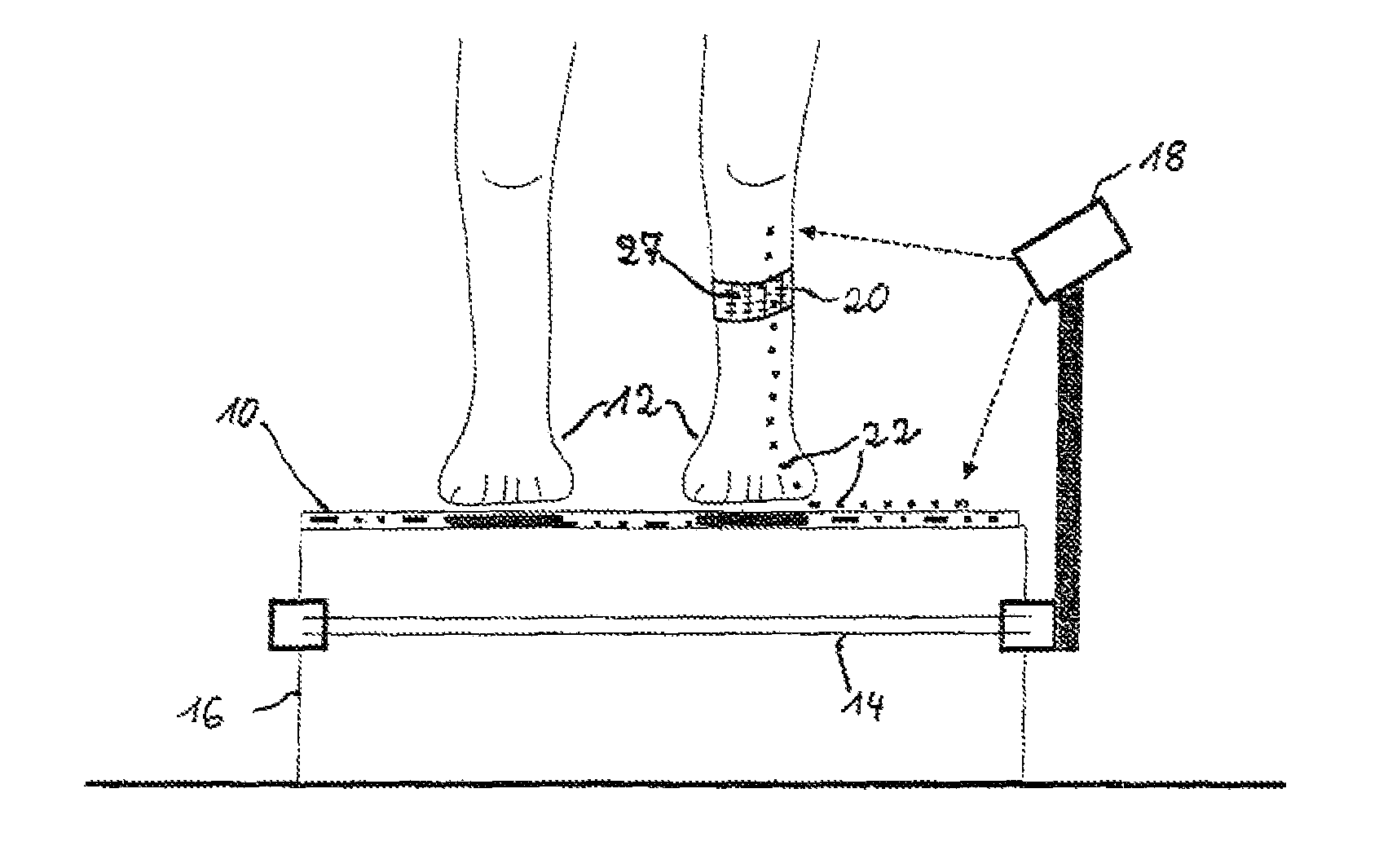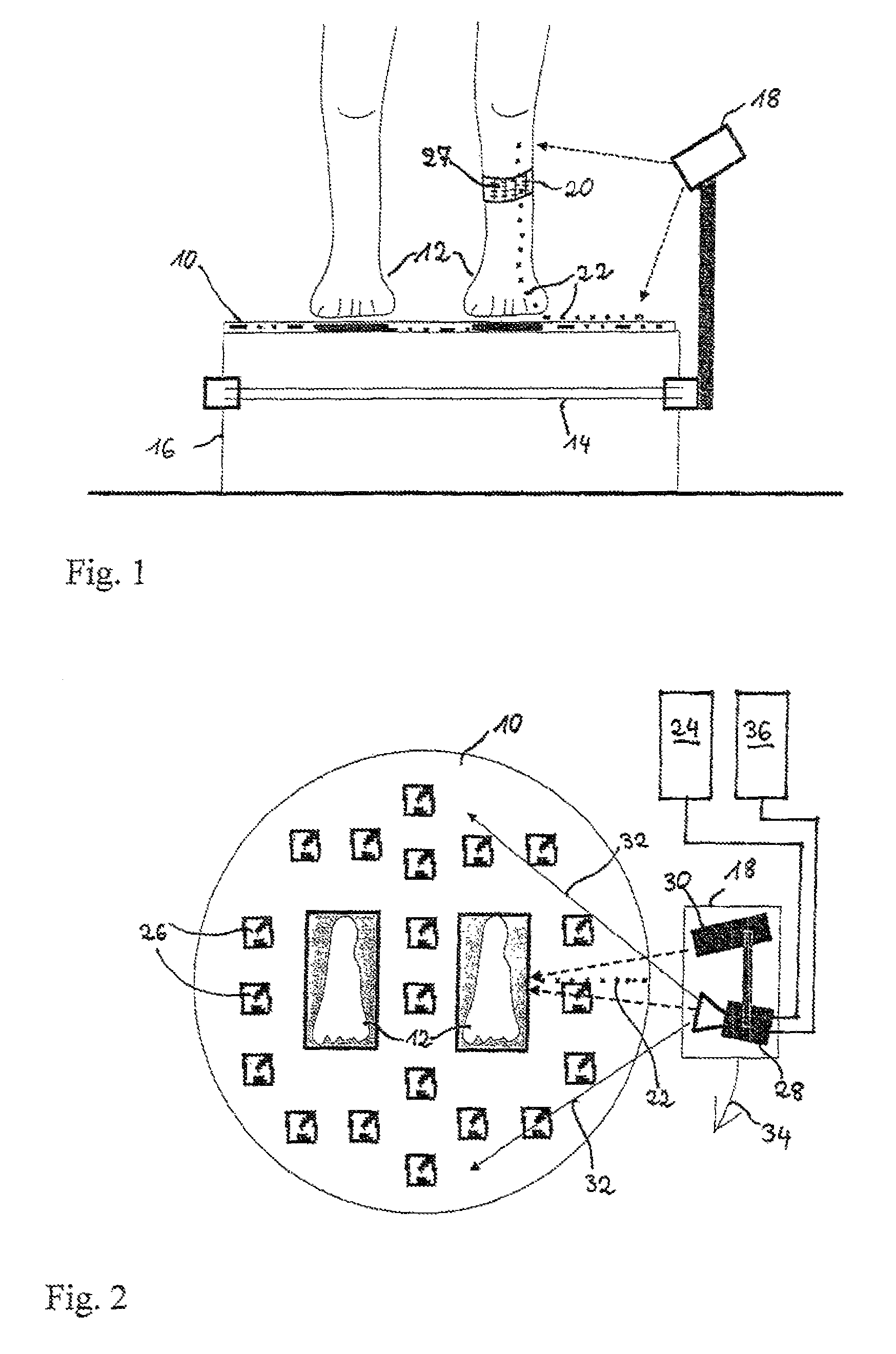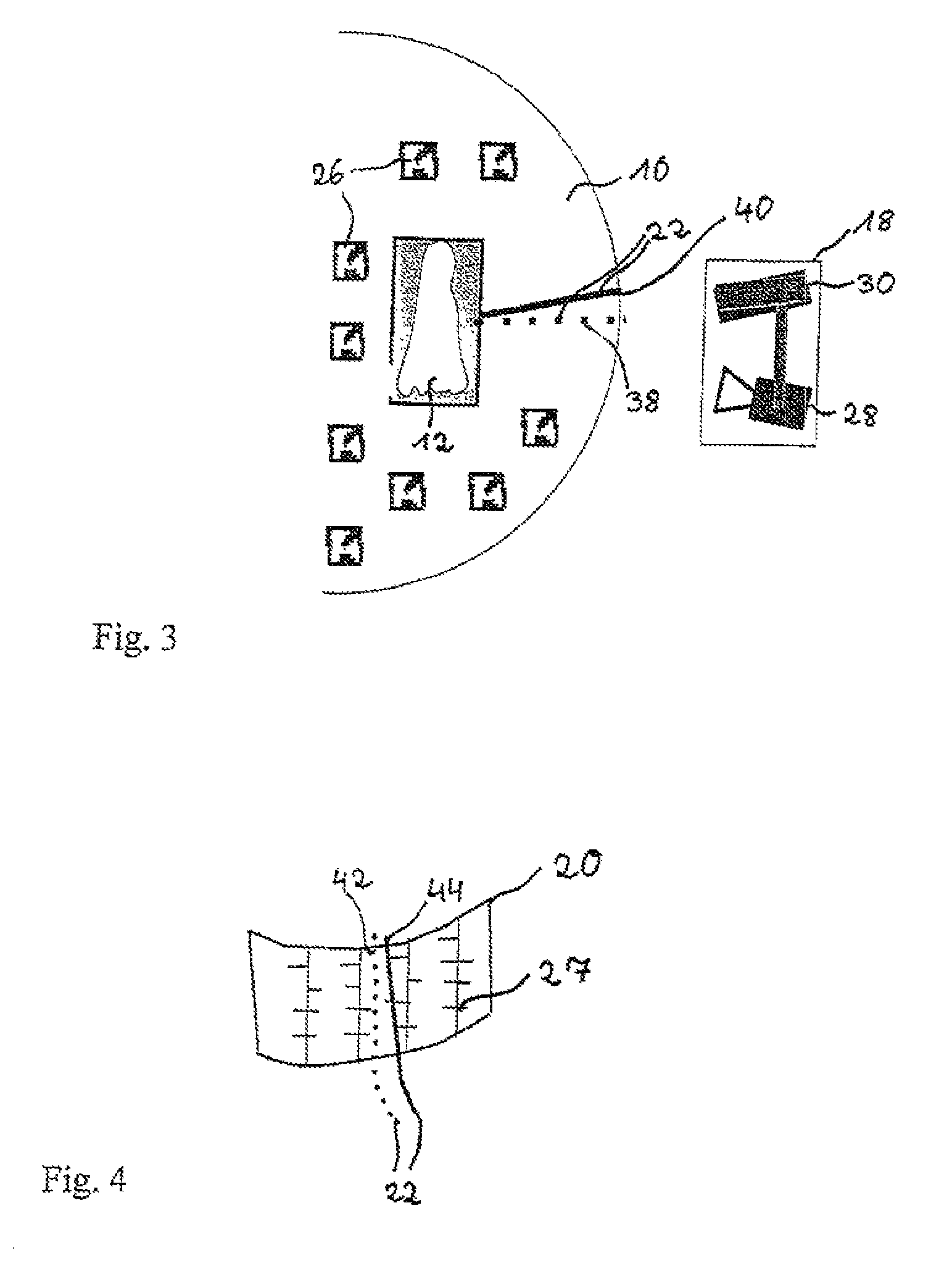High-resolution optical detection of the three-dimensional shape of bodies
a three-dimensional shape, high-resolution technology, applied in the field of high-resolution optical detection of the three-dimensional shape of the body, can solve the problems of insufficient depth of field, insufficient to know the internal and external parameters of the camera alone, and the entire volume of the 3d digitizer is too large for many orthopedic stores
- Summary
- Abstract
- Description
- Claims
- Application Information
AI Technical Summary
Benefits of technology
Problems solved by technology
Method used
Image
Examples
Embodiment Construction
[0033]The exemplary embodiment selected describes the 3D digitization of a foot, for example for the production of an adapted orthopedic shoe. FIG. 1 shows a side view of a photogrammetrically marked surface 10 on which a patient stands, with his feet 12 being visible. A triangulation arrangement 18 with a camera and a light line projector can be mechanically moved around the patient along a substantially circular guide 14 which is mounted to a support 16. Instead of a light line projector, use may also be made of a projector that projects a more complicated light pattern. The mechanical arrangement may be of a simple design; a manual movement of the triangulation arrangement without a guide is also possible. A narrow, preferably elastic, photogrammetrically marked band 20 is in tight fitting contact with a leg above the foot to be digitized; it will be understood that a respective band can also be fitted to each foot, or some other form of applying the marks may be selected as well...
PUM
 Login to View More
Login to View More Abstract
Description
Claims
Application Information
 Login to View More
Login to View More - R&D
- Intellectual Property
- Life Sciences
- Materials
- Tech Scout
- Unparalleled Data Quality
- Higher Quality Content
- 60% Fewer Hallucinations
Browse by: Latest US Patents, China's latest patents, Technical Efficacy Thesaurus, Application Domain, Technology Topic, Popular Technical Reports.
© 2025 PatSnap. All rights reserved.Legal|Privacy policy|Modern Slavery Act Transparency Statement|Sitemap|About US| Contact US: help@patsnap.com



